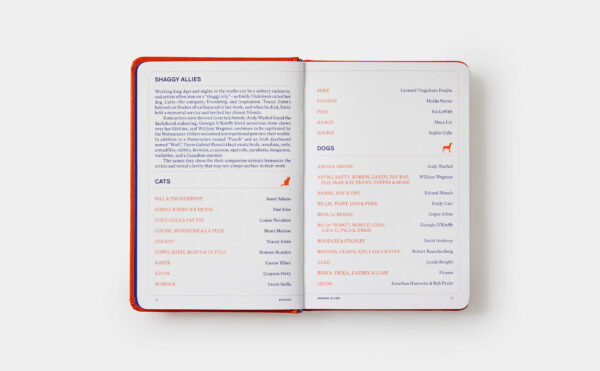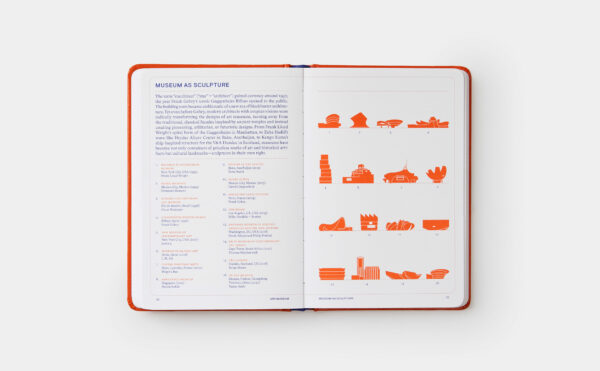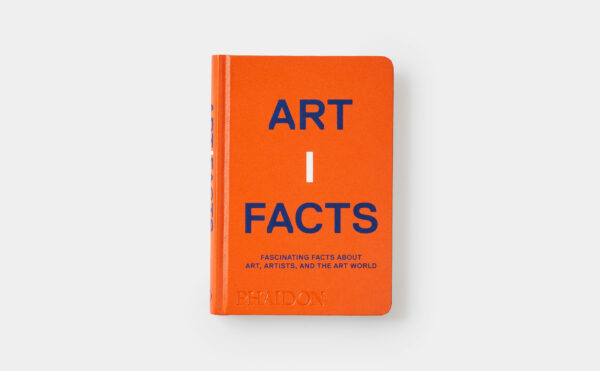As the publication’s title implies, Artifacts: Fascinating Facts about Art, Artists, and the Art World (2022) presents an astonishing amount of facts related to some of history’s most noted artists, as well as the “art world” in which they live. Published by Phaidon Press, the publication, which is compact in size, is chock full of intriguing tidbits, ranging from information about artists’ pets to statistical museum collection breakdowns.
In the preface, the editors state that Artifacts is composed of “meaningful parcels of knowledge: satisfying to navigate, easy to absorb, and surprisingly memorable.” To make the information easily accessible, the contents are grouped into five thematic categories: Artists, Art School, Art Studio, Art Museum and Art World.
In the Artists category, the content focuses on artists as individuals, offering information regarding their personal lives. The topics run the gamut of private matters, including astrological signs, romantic relationships, and personal collecting habits. Through the ‘Sibling Rivalry’ and ‘Creative Couples’ charts, it is revealed that Georgia O’Keeffe was not only married to photographer Alfred Stieglitz, but that she had siblings, Ida and Catherine, who were artists too. In the ‘Shaggy Allies’ section, facts about artists’ pets are shared, making it known that Jackson Pollock had Caw-Caw, a pet crow, and Lucian Freud’s dog was named Pluto.

“Artifacts. Fascinating Facts about Art, Artists, and the Art World,” Published by Phaidon. Artists: Shaggy Allies. Cats. Dogs. (pages 12-13)
The Art School category provides a more detailed look at artists and their educational experiences, or lack thereof. The ‘Classroom Constellations’ infographics provide visual representations of many noteworthy instructors with future-famous students, illustrating their influences on the next generation of artists. It points out that Hans Hoffman taught the likes of Ray Eames, Lee Krasner, Joan Mitchell, and Larry Rivers. The fact that Salvador Dalí was expelled from art school can be found in the ‘Admissions’ section, along with several other surprising names. The Bauhaus and its students, along with Wassily Kandinsky’s color questionnaire developed there in 1923, are examined in-depth as well.
Studio practices are revealed throughout the Art Studio category, shedding light on routines and habitats of many well-known artists. The ‘Creative Routines’ graphics show the studio hours of many, noting that Francis Bacon only worked from 6:00 a.m. to noon, and that Picasso was a night owl, creating from 10:00 p.m. until 5:00 or 6:00 a.m. Additionally, there are several handy guides for artistic tools, like a visual pencil scale and an overview of paintbrushes.
The Art Museum category touches on subjects that range from museums and their architects to the habits of their visitors. The fact that the average time in front of singular works of art went up from 27.2 seconds in 2001 to 28.63 seconds in 2017 sounds promising, until it is clarified that the latter now includes time taken for selfies. The ‘Handle with Care’ and ‘Proceed with Caution’ sections recall notable art-related incidents from over the years, such as the 2012 amateur fresco restoration of Ecce Homo (Behold the Man). This category also provides a statistical analysis of U.S. art museum collection data based on eighteen museums, including Texas’ own Dallas Museum of Art and Museum of Fine Arts, Houston.

“Artifacts. Fascinating Facts about Art, Artists, and the Art World,” Published by Phaidon. Art Museum: Museum as Sculpture (pages 90-91)
The Art World category covers some flashier topics like auction records and art thefts. Pollock and Krasner’s record-selling works are pitted against one another in the ‘Price Tags’ section. A list of art critics and popular terms they coined are all spelled out, pinpointing the exact beginning of terms such as Afrofuturism, Neo-Romanticism and Pop Art. Plus, defunct arts publications and New York galleries that have come and gone are both chronicled.
With over 170 pages full of facts and figures, Artifacts explores a truly broad range of topics, covering the personal to the professional. Grouped together, the publication provides interesting insights for veteran art historians and casual museum goers alike.



